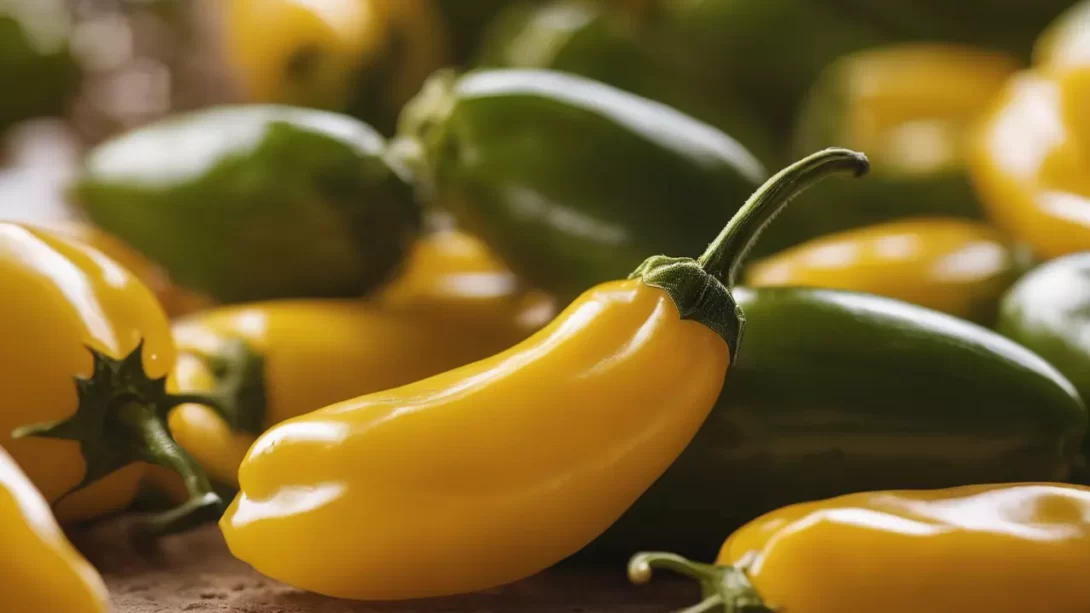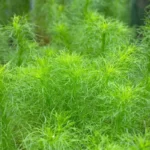Jalapeño peppers, known for their spicy kick, are popular among gardeners for their relatively easy cultivation and versatile use in cooking. These plants typically thrive in warm, well-drained soil and require consistent care to produce their signature green fruits. However, gardeners often encounter a puzzling issue: jalapeños turning yellow. This change in color can be alarming, signaling potential problems with the plant’s health. Understanding the causes of this yellowing is crucial in ensuring a healthy and productive jalapeño crop.
Nutritional Deficiencies Leading to Yellowing
Nitrogen Deficiency: A common culprit for yellowing leaves is a lack of nitrogen. Nitrogen is essential for chlorophyll production, the green pigment vital for photosynthesis. When jalapeño plants are nitrogen-deficient, their leaves can turn yellow, starting with the older, lower leaves. To confirm this, a soil test can be very helpful. Correcting nitrogen deficiency involves amending the soil with a balanced fertilizer or organic matter like compost or well-rotted manure.
Phosphorus and Potassium Deficiencies: Similarly, deficiencies in phosphorus and potassium can also lead to discoloration. Phosphorus is crucial for energy transfer within the plant, and a lack thereof can result in a dark, almost blue-green color, followed by yellowing. Potassium deficiency, on the other hand, typically shows up as yellowing at the leaf edges. Again, soil testing is the best approach to accurately diagnose these deficiencies. Adjustments can then be made using specific fertilizers that address these nutrient gaps.
Watering Issues Causing Yellowing
The balance of watering is key to healthy jalapeño plants. Both over-watering and under-watering can cause stress, leading to yellowing leaves.
Over-Watering: Jalapeño plants are particularly sensitive to over-watering, which can cause root rot and a lack of oxygen in the soil. This condition is often indicated by yellowing leaves, especially at the base of the plant, combined with a wilting appearance despite the soil being wet. To correct over-watering, reduce the frequency and amount of water, ensuring the soil has time to dry out slightly between waterings.
Under-Watering: Conversely, under-watering can lead to dehydration stress. Signs include dry, crispy leaf edges and overall yellowing. Jalapeño plants prefer consistent moisture, so establishing a regular watering schedule that keeps the soil evenly moist (but not soggy) is crucial. During hot or windy conditions, more frequent watering may be necessary.
Impact of Sunlight on Jalapeño Plant Health
Sunlight is a fundamental factor in the health and growth of jalapeño plants. It influences not only growth but also fruit development and coloration.
Importance of Adequate Sunlight: Jalapeños require full sun, meaning at least 6-8 hours of direct sunlight daily. Insufficient sunlight can lead to leggy plants with weak stems and pale yellow leaves. In such cases, relocating the plants to a sunnier spot or using grow lights, if growing indoors, can help restore their vibrant green color.
Effects of Excessive Sunlight: While jalapeños love the sun, too much of it, especially in hotter climates, can cause stress. Symptoms of excessive sun exposure include yellowing and curling leaves, and in severe cases, sunscald on the fruits themselves. Providing afternoon shade or using shade cloths during the hottest part of the day can protect plants from the harsh effects of intense sunlight.
Diseases and Pests Affecting Jalapeño Plants
Diseases and pests are another common reason for yellowing in jalapeño plants. Early detection and intervention are key to managing these issues.
Common Diseases:
- Mosaic Virus: This virus causes mottled green and yellow leaves and distorted fruit. It is often spread by aphids and can be managed by controlling these pests and removing affected plants to prevent spread.
- Bacterial Leaf Spot: Identified by small, water-soaked spots that turn yellow and necrotic, this disease thrives in wet conditions. Good air circulation, avoiding overhead watering, and using disease-resistant varieties are effective preventive measures.
Pest Infestations:
- Aphids: These small, sap-sucking insects can cause yellowing and distorted leaves. They also excrete a sticky substance called honeydew, which can lead to sooty mold. Controlling aphids through natural predators like ladybugs, neem oil, or insecticidal soaps is effective.
- Spider Mites: These tiny pests are hard to see but can cause significant damage, leading to yellow, speckled leaves and overall plant stress. Increasing humidity and using miticides can help control spider mite infestations.
Environmental Stress and Its Effects
Environmental factors can significantly impact the health of jalapeño plants, leading to yellowing and other stress symptoms.
Temperature Extremes: Jalapeños prefer a warm growing environment but can be sensitive to extreme heat or cold. Temperatures above 90°F (32°C) can stress plants, causing yellowing and dropping leaves, while cold temperatures can stunt growth and lead to yellow, wilted leaves. Using mulch can help regulate soil temperature, and protective covers can shield plants from extreme temperatures.
Wind and Physical Damage: Strong winds or physical damage can also stress jalapeño plants, leading to yellowing leaves. Staking or supporting plants in windy areas can help prevent physical damage.
Natural Ripening Process
Understanding the natural ripening cycle of jalapeño peppers is essential in distinguishing between problematic yellowing and natural changes. Jalapeños typically transition through several color stages as they mature.
Stages of Ripening: Initially, jalapeños are a vibrant green color. As they ripen, they may turn yellow, then orange, and finally red. This color change is a natural part of the ripening process, accompanied by a change in flavor and heat level. The yellow phase should not be confused with the unhealthy yellowing of leaves or stems.
Harvesting Based on Color: Gardeners can choose when to harvest jalapeños based on their color and desired flavor profile. Green jalapeños are crisp and moderately spicy, while fully ripened red jalapeños are sweeter and hotter. Yellow jalapeños are often an in-between stage, offering a slightly different flavor.
Conclusion
Jalapeño peppers turning yellow can be a sign of various issues, from nutritional deficiencies and watering problems to disease and environmental stress. However, it’s also a natural part of the ripening process. By understanding these different causes, gardeners can effectively diagnose and address any problems, ensuring a healthy and productive jalapeño crop. Regular monitoring, along with appropriate care and adjustments, will keep your jalapeño plants thriving and producing delicious peppers for your culinary adventures.



